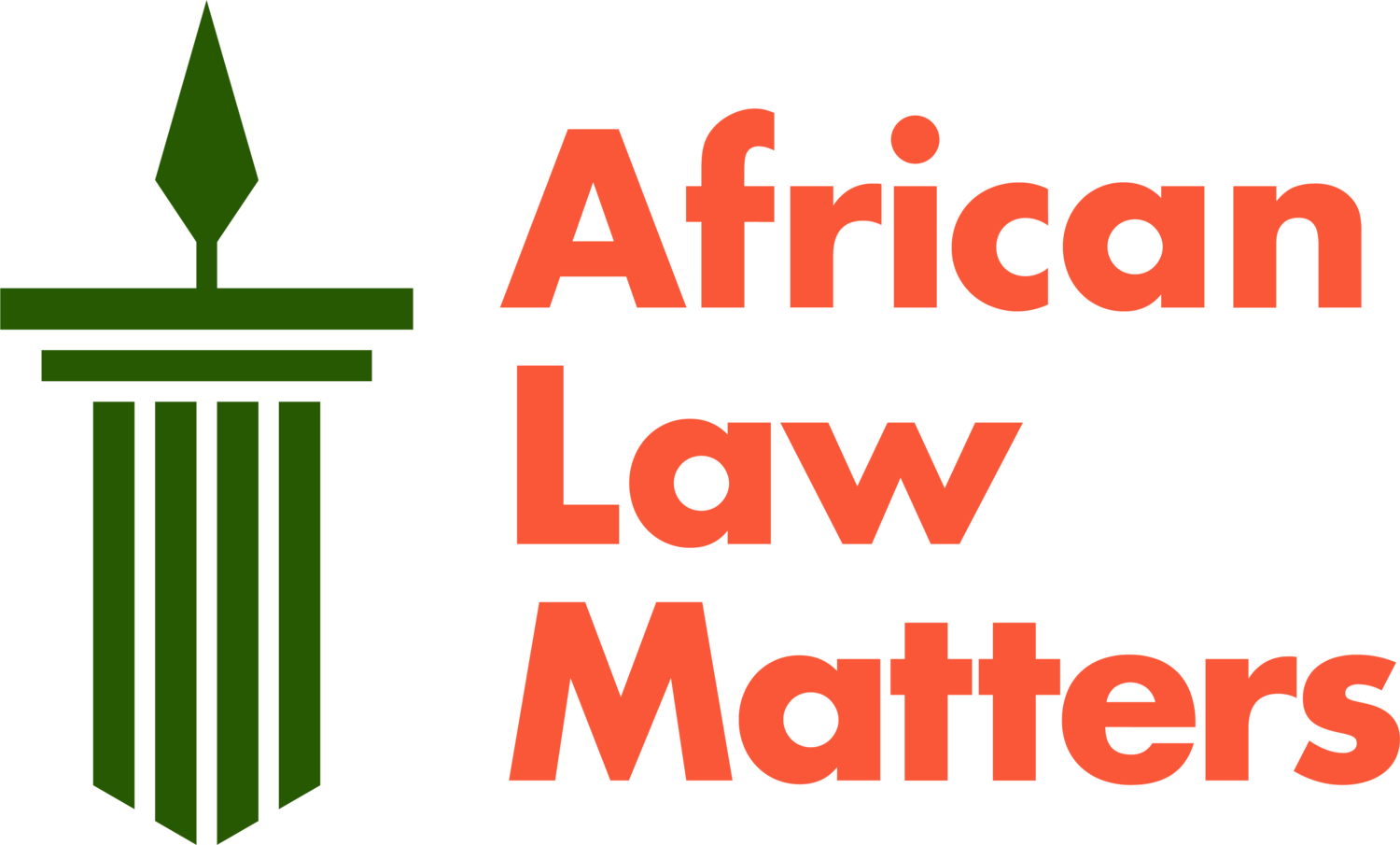Prisons in Africa – a death sentence for women’s rights
"Women Prison Jail" by Matthew Henry is licensed under Creative Commons by Negative Space.
In 2019 a female inmate (“Inmate H”) awaiting trial for attempted housebreaking at a prison in South Africa suffered a psychotic breakdown. During the episode, she was sexually assaulted by fellow inmates. After a brief, court-ordered stint in psychiatric hospital, she was returned to prison with no medical file and a broken shoulder. Not long after, Inmate H was found dead in her cell with a bottlecap lodged in her windpipe.
Carceral feminism - which looks to the coercive power of the state, police and prisons as the primary vehicle of women’s emancipation - has for some time dominated feminist discourse and action. However, as I have argued previously, it has increasingly come under severe criticism from feminists who argue convincingly that prisons are tools of racial and capitalist repression, that they do not keep women safe or deliver victims justice and that, instead, a broader, socio-economic transformation of society is necessary if we are to ever truly be free from violence.
But even these critiques see women primarily as victims of crime and men as perpetrators. For proponents of carceral feminism, prisons are related to women only insofar as they are filled with the men who abuse, assault and kill women. For critics of carceral feminism, prisons are related to women insofar as they disproportionately detain the poor, Black and brown men who marginalised women care about and are in community with.
In reality, there are more women in prison worldwide than ever before and, like Inmate H, they are subjected to conditions that replicate the deprivation, abuse and violence they so often experience in the outside world.
“The women subjected to these horrific conditions are generally among the most marginalised women in our societies. Incarcerated women the world over and in Africa are overwhelmingly Black, poor, and undereducated. They are often mothers and in many instances have endured violence and abuse during their lifetimes, often during childhood.”
While men continue to make up the overwhelming majority of persons in prison, over the last 20 years the female prison population has risen by 33% - outstripping the 25% growth in the male prison population. In Africa, women make up a small and relatively stable percentage of the prison population. But because of overcrowding, under-resourcing and the fact that in both these contexts the average prisoner is a man, prison facilities tend to be poorly designed to serve and support women.
Women in African prisons endure endemic overcrowding, inadequate food, and poor hygiene and sanitation. As a result of these conditions, disease runs rampant and healthcare services are generally poor, especially sexual and reproductive healthcare.
One study described the conditions in several female prisons in Sub-Saharan Africa in these harrowing terms:
“In Cameroon overflowing buckets in cell corners were used as the only form of toilet for women, while in Nigeria female prisoners complained of having to use their hands and buckets to remove faeces from overflowing suck-away, and described being exposed to faeces in the prison yard. In Mozambique women used bags to relieve themselves at night… Zimbabwean women prisoners described using newspapers, tissues, pieces of blankets, and sometimes prison uniforms in the place of sanitary pads.”
And many incarcerated women suffer multiple forms of violence and abuse by officials and fellow inmates. Incarcerated women are physically assaulted, subjected to verbal and emotional abuse, and are frequently sexually assaulted and raped.
Prominent abolitionist feminist Mariame Kaba points to strip searches, stop and frisks, cavity searches and the rigid gender binaries enforced in prisons to argue that policing and prisons abuse people by design, deploying and mirroring interpersonal gendered, domestic and sexual violence. Kaba claims that “when we sentence people to prison, we are essentially sentencing them to judicial rape”.
The women subjected to these horrific conditions are generally among the most marginalised women in our societies. Incarcerated women the world over and in Africa are overwhelmingly Black, poor, and undereducated. They are often mothers and in many instances have endured violence and abuse during their lifetimes, often during childhood.
Their experiences within prisons may compound the trauma they have experienced outside, and the lack of adequate rehabilitation and education programmes for women as well as prolonged separation from their families and support systems leave them poorly equipped to live better lives upon release. To sanction such treatment of women is inconsistent with the goals of those care about the equal, dignified treatment of women.
There is also reason to think that this suffering could be avoided. The United Nations Standard Minimum Rules for Non-custodial Measures (the Tokyo Rules) and the United Nations Rules for the Treatment of Women Prisoners and Non-custodial Measures for Women Offenders (the Bangkok Rules) urge states to make greater use of non-custodial sentences, including diversionary measures, pretrial and sentencing alternatives, and sentencing procedures which consider the history of victimisation of many women offenders and their caretaking responsibilities.
In addition, the Bangkok Rules direct states to develop and provide therapeutic counselling for victims of domestic violence and sexual abuse, suitable treatment for those with mental disabilities, and the provision of gender-sensitive, trauma-informed, women-only substance abuse treatment programmes for both crime prevention and diversionary purposes. The Rules also mandate states to provide educational and training programmes to improve women’s employment prospects upon release.
Non-custodial sentences should be implemented together with restorative approaches to justice. Restorative justice brings together the perpetrator, victim, families and the community to collectively identify and address harms, needs and obligations through accepting responsibility, making restitution, taking measures to prevent a recurrence of the incident and promoting reconciliation. Numerous studies have shown that restorative justice outperforms imprisonment when it comes to reducing repeat offending, reducing victim’s post-traumatic stress symptoms, costs and their desire for revenge.
A criminal justice system built on these foundations would be one that reckons honestly with the causes of crime, prevents reoffending, foregrounds the needs of the victim, and recognises the humanity of the perpetrator. Unfortunately, both restorative justice and non-custodial measures remain criminally underutilised globally and across the African continent. States, civil society and feminists must direct their energies towards crafting and implementing gender-appropriate restorative justice processes and non-custodial measures.
But feminists who oppose prisons want to do more than change how women are treated after they commit crimes. They are concerned with building societies in which women are no longer pushed to commit crimes in the first place.
Incarcerated women are generally convicted or accused of murder, theft, infanticide and specific gendered-crimes, such as sex work and abortion. Some of these crimes, such as abortion, drug use and sex work, arguably should not be crimes at all. Others may have been prevented in a more functional, egalitarian and supportive society.
Political scientist Marie Gottschalk has described carceral feminism as “a drift from the welfare state to the carceral state as the enforcement apparatus for feminist goals”. This drift, I consider, grievously misdirected. A world in which the burden of child-rearing did not fall almost exclusively on women, with dignified, well-paying jobs, adequate social welfare, affordable housing, universal childcare services, free healthcare – including reproductive healthcare, psychiatric care and voluntary addiction services, would be a world in which women are less likely to commit many of these crimes. It would also be a world in which women in general are safer, able to leave their abusers, and less vulnerable to abuse and rape. Feminists must work towards building this world.
The walls of a prison function both to keep detainees in and to keep the public out. A feminist movement committed to protecting and empowering the most marginalised among us must nonetheless turn its gaze towards prisons, to the increasing number of women who find themselves within those walls, and to the alternative visions of safety and justice that a divestment from carceral politics might offer us.


